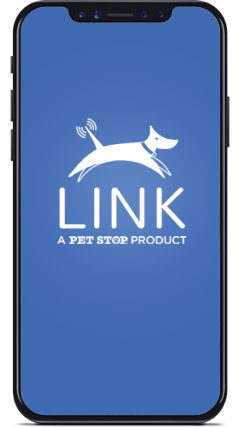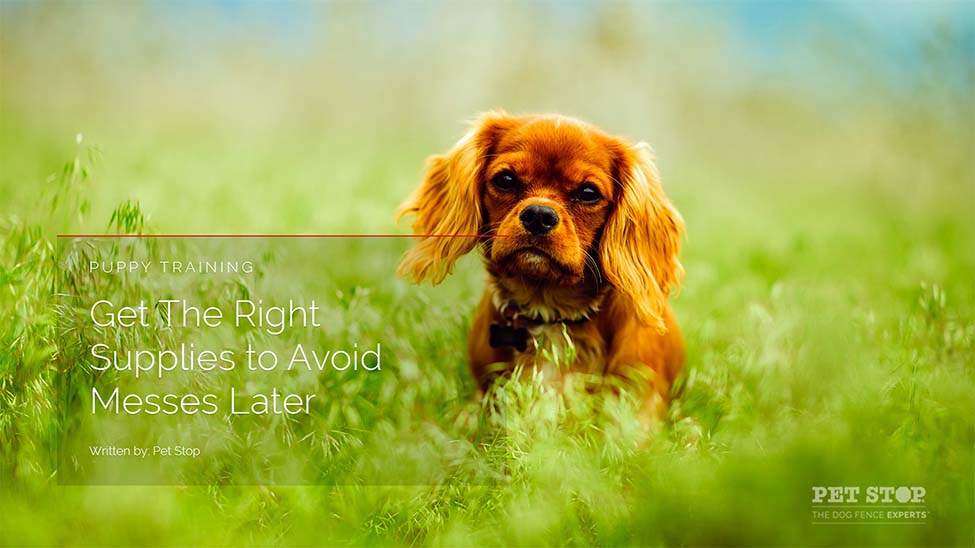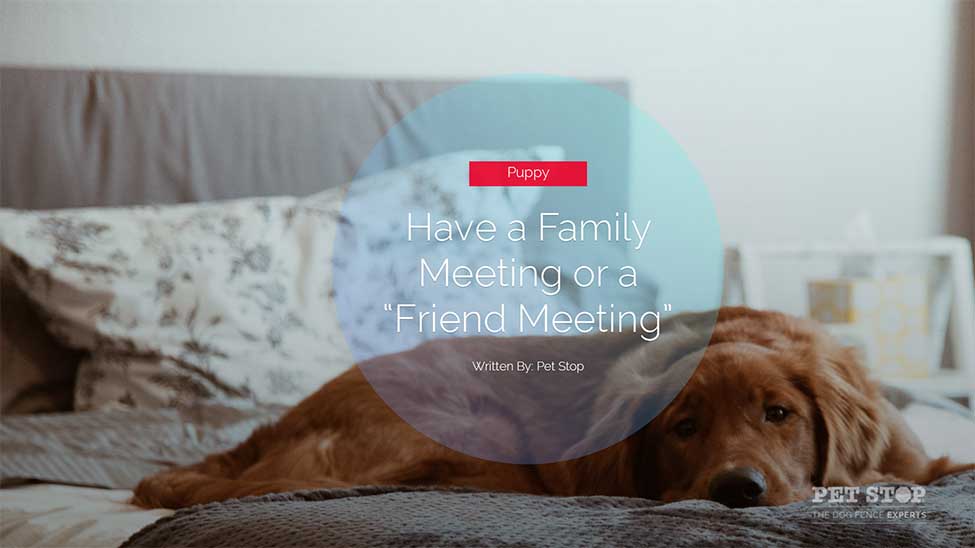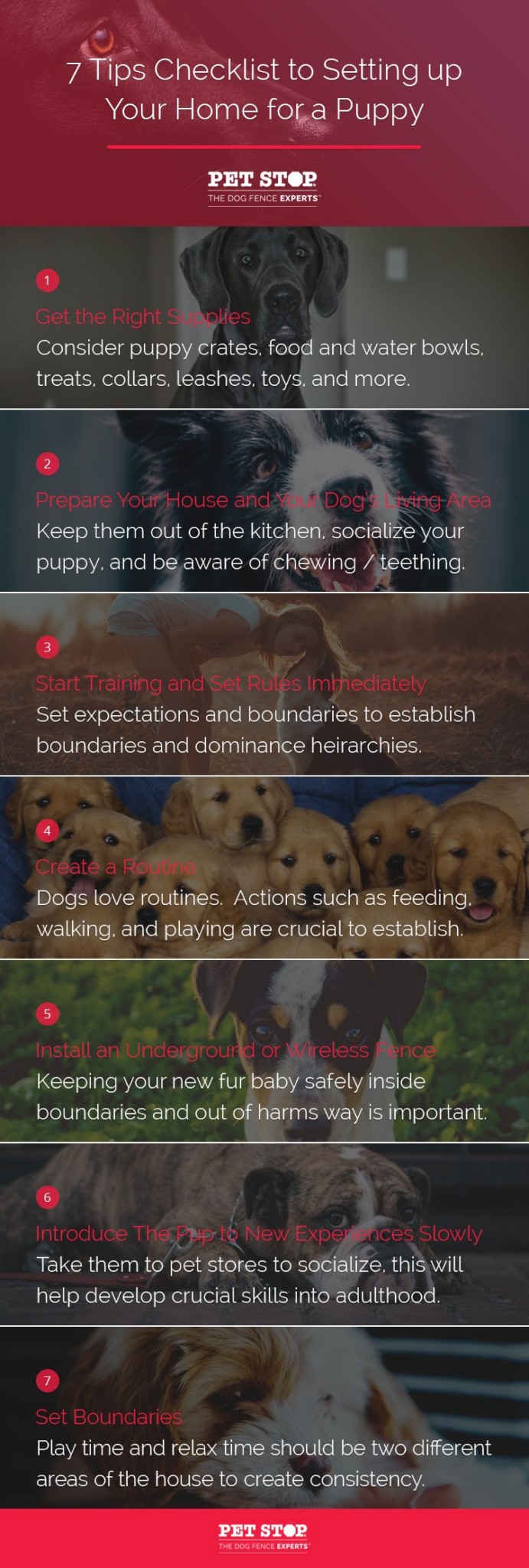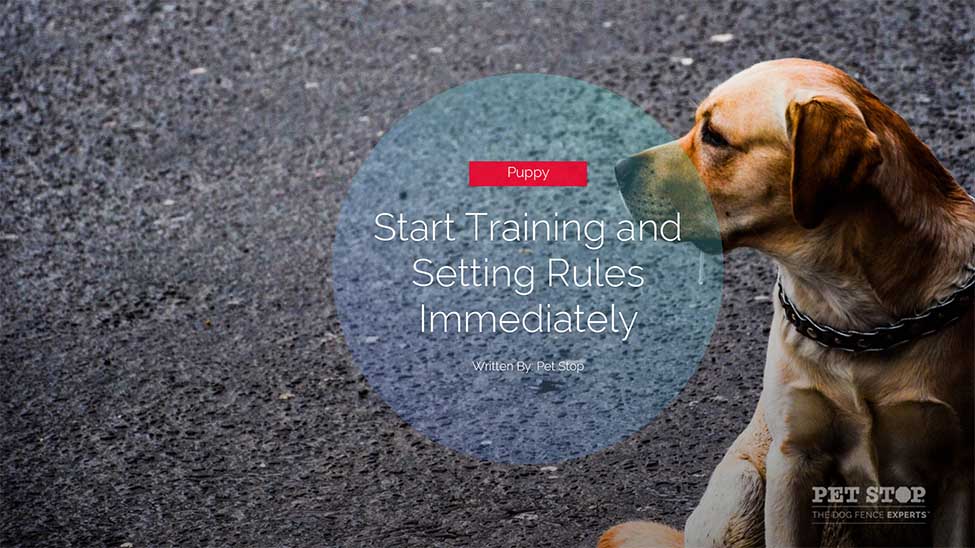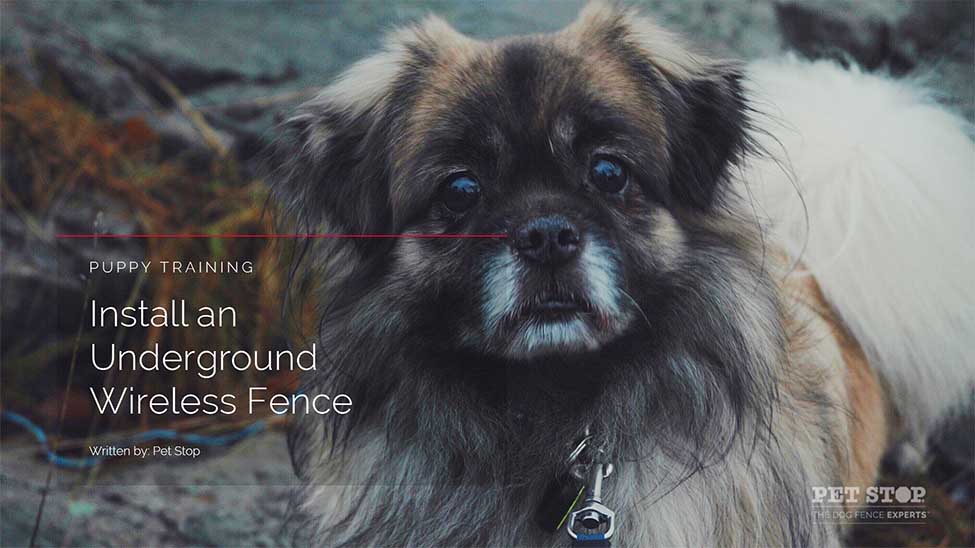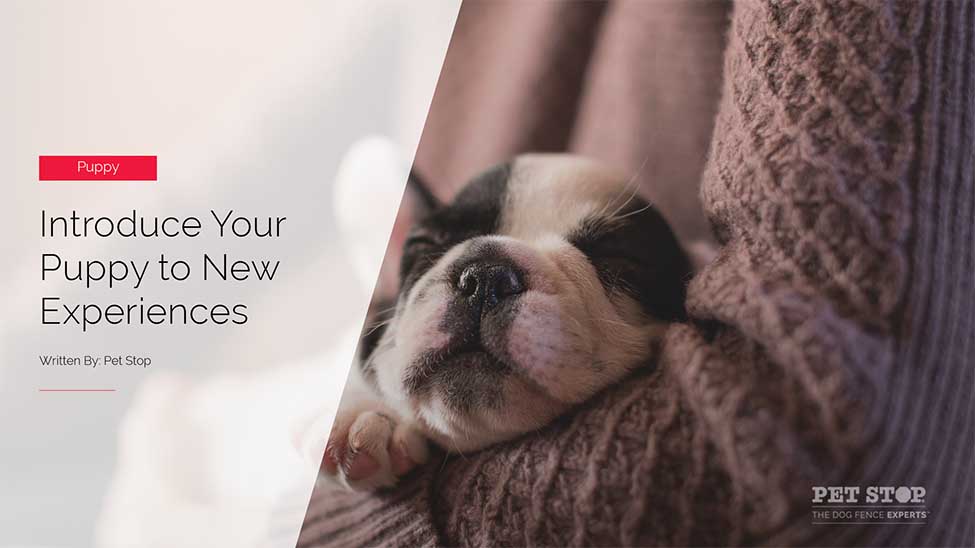10 Steps to Ensure Your Home is Puppy Ready
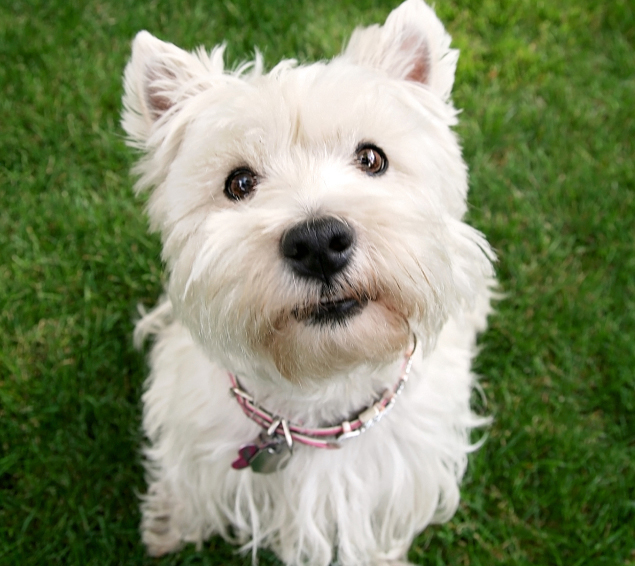
Bringing a new puppy into the family can be one of the most exciting, loving and rewarding experiences for a family. Having a pet in the family is said to help bring families closer together while promoting feelings of happiness, closeness and relaxation. In addition, there’s been many studies done showing that pets in general help reduce stress, anxiety and can help many people cope with various difficulties in life. With that being said, if you’re reading this article and you’re bringing a new furry friend into your life, you’re in luck! Because we’re going to cover a series of important steps from pet containment to potty training that you’ll need to consider to ensure you and your pup have a great first experience in your new home together. Bringing a new pet into your home can be very exciting, but it’s important to know that it comes with great responsibility and effort. So, here’s a 10 Step Checklist of items you’ll need to plan on accordingly to ensure you and your new pup have a smooth introduction and transition to becoming best friends and roommates for life. Keep in mind they aren’t listed in any particular order:
#1 – Have a Family Meeting
If you’re single, this may not apply to you. But, you may want to talk to a few friends or family members to ensure that someone will be around to do some dog-sitting should you ever decide to go out of down or on a vacation. However, if there’s more than one of you in the family, this is very important. You want to make sure that everyone in the family is on board with having a new dog in the house and that any concerns are addressed beforehand. During this meeting you should discuss who the primary caretaker will be for the dog will be in terms of walking, feeding, playing and cleaning up the poop, yes we said it! Will you feed him normal food or treats from the dinner table? You’ll want to agree on a set of commands that everyone will use to create consistency. Who’s in charge when the person responsible is absent? All important things to discuss to prevent any future surprises. In addition, you also want to make sure you have someone old enough and responsible to be able to take your dog to vet appointments when necessary. It’s always a great idea to divvy up the responsibility between family members to lighten the load and to give everyone a chance to develop a deeper relationship with your new pup. Once you address these concerns, write them down on a calendar or piece of paper to make sure nobody forgets and stays accountable. This way, everything is clear and everyone knows their responsibilities.
#2 – Get The Right Supplies
This can include a puppy cage or crate, food and water bowls, treats, collars and leashes, beds, toys and chew toys, stain cleaners and odor removers, fake grass, potty training pads, and some indoor & outdoor pet fences, gates to keep your pet contained in a certain area. Depending on the age, breed and size of your dog, all of these items will vary, so it’s important to do a little research and diligence ahead of time to ensure you get all of the right supplies & equipment.
#3 – Prepare Your House And Your Dog’s Living Quarters
This is one is important, so take notes! You’re new little friend is going to be very curious as he moves into his new home. He’s also going to start teething in a matter of weeks and is going to be on a biting and chewing rampage. So, it’s a good idea to make sure you don’t have random, loose items laying around like clothing, shoes, wallets, books, papers, toiletries, plants, electronics / cords and other household items that your dog could grab a bite of. Also make sure you keep your dog out of the kitchen to prevent them from accidentally opening and drawers or cabinets and eating or swallowing something that could harm or poison them. This is especially important for medicine cabinets. Once you feel like you’ve done a good job of puppy-proofing your home, you should lay down onto the ground and get eye level to look around once more for anything you may have missed. Ideally you want to set your pup up somewhere in the middle of the house so they can be around people and get attention so they don’t feel isolated. This is important, especially as they’re moving in and getting comfortable with their environment and the family. As we mentioned before, you’re doing is going to want to explore and roam your house if he/she has the chance, so it’s important to set the house rules and training immediately from when your dog first arrives so they learn and start to recognize what is okay and what is not. Don’t worry, remember that your dog likes rules, structure and someone to look up to, so don’t be afraid of being the Alpha right from the beginning.
#4 – Start Training And Setting Rules Immediately
Most people want to give it a few days or even weeks before they start training their new pup, but this is a mistake. By training them early and setting up the right expectations, it makes it both easier for you and your new pup to get off on the right foot (or paw) while establishing the correct boundaries and dominance hierarchies. You’ll want to start with recall training, leash training and other basic commands like sit and stay. A well trained pup makes for a happy pup and a happy owner. Everyone loves a well trained dog, so don’t “drag” this part of the experience! It’s actually one of the most fun and exciting for both you and your new pup. You’ll both enjoy the progress and growth that comes out of it.
#5 Create a Routine and Stick To It
Unlike some humans, dogs crave routine! Early on, create a routine that both you and your dog can consistently follow to ensure that the important, foundational responsibilities such as feeding, walking, playing and cleaning up after your dog are met. Once you establish a good routine, both you and your dog will appreciate this since it provides defined times for you two to be together and to take care of the things that need to be done to ensure a happy, thriving relationship.
#6 – Install an Underground Pet Fence If You Live in a House or Have a Yard
While this may not apply to everyone, it’s an important first step to ensure that your dog stays within the safe limits and boundaries of your home. Unexpected surprises, animals, noises or events could scare your pup and cause them to suddenly bolt away from your yard or front door, so having a pet fence that is invisible will gently cause them to stop and return back to their defined boundary to prevent any unwanted injuries or accidents.
#7 – Establish House Boundaries and Potty Areas
Establish and define areas where your dog can play, where they must stay out of and where they can relax. It’s important that you also establish where they go potty early on to prevent them from “going” in the wrong places causing unnecessary and excess cleanup. You should follow these guidelines for the first few weeks until your dog starts to recognize and learn them.
#8 – Introduce Your Pup To New Experiences Slowly
Take them to pet stores to socialize, introduce them to parks (maybe not dog parks until they’re older), new environments, friends and family to prevent aggression and isolation as they get older. Just like a baby, they’ll be curious and will love to learn and discover new things.
#9 – Consider Getting Them Microchipped
It only costs around $25 at your local vet or shelter and will put your mind at ease to know that you’ll always know where they are in case they get lost.
#10 Keep Your Dog Confined To Their Doggy Den When You’re Away
This ensures established boundaries and prevents any unexpected surprises when you come back home. Also, when they’re young, it is important to establish dominance and teach them that they don’t get free reign on the house. Their crate or den can also be used as a form of punishment to help them learn when they do something bad. It’s also important to keep them in their den around small children initially for safety reasons as well. These 10 tips are going to serve as the foundation to ensure you have a smooth experience when it comes bringing a new pup into your home! If there are any other tips you feel are important that we may have left out or missed, let us know in the comments section below. Also, let us know the name of your new pup and what breed they are! We’d love to know!
 Pet Stop
Pet Stop Get a Free Quote
Connect with Your Local Pet Safety Experts at Pet Stop. Visit, call, or
chat with us – we’re here to help you create the ultimate safe haven for your pet.
Get a Free quote
Name *
Zip code where new fence is required *
What breed is your dog?
Preferred contact method *
Phone Number to Call/Text *
Address *
Stay Connected, Stay in Control
Brief introduction to the OT-300, highlighting remote control, real-time notifications, and easy setup through the Pet Stop Link App.
Download the App